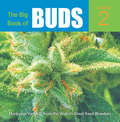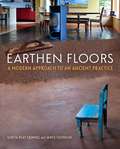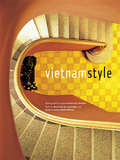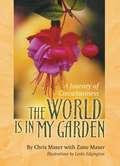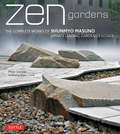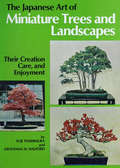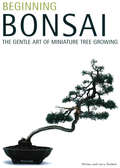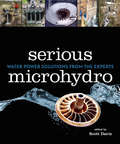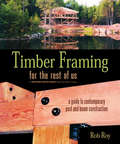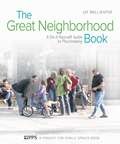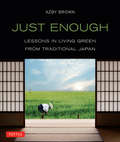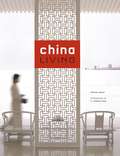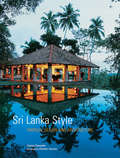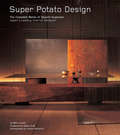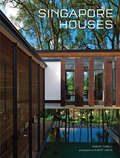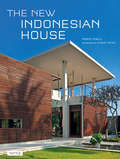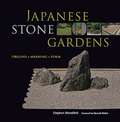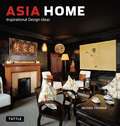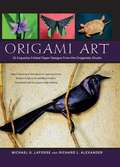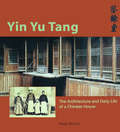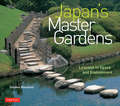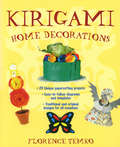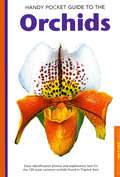- Table View
- List View
The Big Book of Buds
by Ed RosenthalThe Big Book of Buds Volume 2 continues in the tradition of its predecessor by combining stunning, full-color photography with fun and clear descriptions of the characteristics that any gardener or connoisseur wants to know. With no strains repeated from Volume 1, this second volume supplements the first Big Book of Buds with another 100 of the latest and greatest marijuana strains commercially available in the world today.No other book brings together as much information for choosing or identifying specific marijuana strains. Each variety is described with quick reference icons for immediate overview and sorting. An engaging text description also helps the enthusiast distinguish the unique qualities of each strain, including appearance, ripening time, and growing characteristics, as well as smell, taste and the texture of the high.Interspersed throughout the book are short, engaging essays that offer insights into botanical and cultural aspects of this controversial yet immensely popular plant. The practical information provides an indispensable reference for the grower, while the lush photographs and entertaining, insightful essays make this a great book for the casual browser as well.
Earthen Floors
by James Thomson Sukita Reay CrimmelFor most of human history, people have lived in durable, comfortable buildings made from natural materials such as soil, sand, rocks, and fiber. All over the globe, these ancient traditions persist; a quarter to a third of the world's population today lives in houses built partially or entirely of earth. Conventional Western building techniques using industrial materials may save time and create efficiencies, but these perceived savings come at considerable financial and environmental cost.As well as boasting a unique and beautiful aesthetic, natural building techniques are accessible, affordable, and non-toxic. Earthen Floors: A Modern Approach to an Ancient Practice is the first comprehensive, fully illustrated manual covering the history, use, and maintenance of this attractive, practical flooring option. This detailed, fully illustrated guide explains every part of the process, including: Sourcing and harvesting materials Preparing the subfloor Pouring, finishing, and sealing the floor Living with and maintaining your earthen floorBecause information on creating quality earthen floors was not previously widely available, there have been some negative experiences. Drawing on the combined knowledge of the most qualified earthen floor practitioners, as well their own substantial experience, the authors deliver the definitive resource for this exciting technique, perfect for everyone from the novice to veteran builder.Sukita Reay Crimmel has installed over twenty thousand square feet of earthen flooring, and is one of the preeminent experts in the emerging field of earthen floors.James Thomson is part of House Alive, one of the leading natural building training organizations in the country.
Vietnam Style
by Luca Invernizzi Tettoni Bertrand De Hartingh Anna Craven-Smith-MilnesVietnam has long captured the imagination of travelers, both real and armchair. It is an appealing country, filled with natural beauty, tranquil village life and fascinating cities. Vietnam also has an inimitable architectural and interior design style, the product of its rich cultural heritage and the various influences of Chinese, French and other Western colonialism.Vietnam Style is an exploration of the balancing act between traditional vernacular design and architecture and the outside influences of colonialism. The unusual and striking new design styles created by melding these elements are a true cultural kaleidoscope of Vietnam today. Chinese-style shophouses, temples with Indian influences, Thai-style palaces, French Colonial civic and domestic buildings, and the variety of tribal and native wooden houses present in Vietnam Style offer an intimate look into the vibrant, yet virtually unknown world of modern Vietnamese architecture and design.
Paradise By Design
by Bill BensleyEclectic, baroque and sophisticated-such are the characteristics of the lifestyle resorts and extravagant private residences crafted by the renowned Bensley Design Studios in Bangkok and Bali. The 27 resorts and homes featured in Paradise by Design are set amidst resplendent tropical gardens and spread from China to India to Bali. Focused in Asia Pacific, these buildings are unconventional, sensual and hold a special reverence for the tropical climate. Focusing not only on the architecture of the buildings, but also the landscape design, interior design, horticulture and fine arts and crafts found within and without these buildings, Paradise by Design transcends the traditional and details an inclusive look at some of the most stylish and diverse homes and resorts in Asia.
The World is in My Garden
by Chris Maser Zane MaserThe World is in my Garden: A Journey of Consciousness is based on a simple premise: the private garden is a metaphor for everything that goes on in the macrocosm, including ecological, social, personal and spiritual issues. The authors work the metaphor of the garden in a rich way. This book show us how to connect what seems like a simple personal act, tending a home garden to larger social issues. They guide us through four garden gates: Ecological Consciousness, Social Consciousness, Personal Consciousness, and Spiritual Consciousness.Written with passion, warmth and a deep understanding of the worlds of matter and consciousness, the book teaches us how to live in a balanced way with all of life.
Zen Gardens
by Mira Locher Uchida ShigeruShunmyo Masuno, Japan's leading garden designer, is at once Japan's most highly acclaimed landscape architect and an 18th-generation Zen Buddhist priest, presiding over daily ceremonies at the Kenkoji Temple in Yokohama. He is celebrated for his unique ability to blend strikingly contemporary elements with the traditional design vernacular. He has worked in ultramodern urban hotels and in some of Japan's most famous classic gardens. In each project, his work as a designer is inseparable from his Buddhist practice. Each becomes a Zen garden, "a special spiritual place where the mind dwells."This beautiful book, illustrated with more than 400 drawings and color photographs, is the first complete retrospective of Masuno's work to be published in English. It presents 37 major gardens around the world in a wide variety of types and settings: traditional and contemporary, urban and rural, public spaces and private residences, and including temple, office, hotel and campus venues. Masuno achieved fame for his work in Japan, but he is becoming increasingly known internationally, and in 2011 completed his first commission in the United States which is shown here.The book, divided into three chapters, covers: "Traditional Zen Gardens," "Contemporary Zen Gardens," and "Zen Gardens outside Japan." Illustrated with photographs and architectural plans or sketches, each garden is described and analyzed by author Mira Locher, herself an architect and a scholar well versed in Japanese culture.Celebrating the accomplishments of a major, world-class designer, Zen Gardens also serves as something of a master class in Japanese garden design and appreciation: how to perceive a Japanese garden, how to understand one, even how to make one yourself. Like one of Masuno's gardens, the book can be a place for contemplation and mindful repose.
The Japanese Art of Minature Trees and Landscapes
by Giovanna M. Halford Yuji YoshimuraNOW AT LAST an eminently practical book about one of Japan's most fascinating arts. Japanese miniature landscapes and, particularly, dwarf trees-"bonsai," as they are frequently called even in the West-have long been admired throughout the world, and large sums have been spent importing them into other countries, often only to have them die. There is something so magical, unearthly even, about their gemlike beauty that their creation has generally been thought an occult science, and for the layman even their care and preservation have seemed to be shrouded in mystery. As this book proves, however, the creation and care of bonsai is a comparatively simple art which can actually be systematically taught rather than, as in earlier books on the subject, just talked about vaguely. Now, given a reasonably green thumb and a modicum of patience, anyonein any country can create his own bonsai; and still easier is it to apply the few matter-of-fact rules necessary to keep a finished bonsai in healthy and vigorous condition for generations. Here are detailed instructions, together with many helpful diagrams and charts and a treasury of photographs, on every phase of the art: propagation and training, with hints for those in a hurry and for small-apartment dwellers; daily and seasonal care, and treatment of pests; how to judge, select, and exhibit bonsai, with emphasis always upon the untold enjoyment they can provide. Included also, for those who want still more detailed information, are invaluable appendices concerning tools and equipment, soil analyses, and precise data on the more than three hundred species of plants used in making bonsai. This, then, is a definitive work, one which has long beenneeded and which will remain the bonsai book for years to come. It is a book for those who want to try their hand at a fascinating hobby; for those who, preferring to buy their bonsai ready-made, want to fulfill their responsibility of preserving such miniature loveliness; and for those who want simply to understand more about one of Japan's most treasured traditions, "sculpturing beauty in living wood."
Beginning Bonsai
by Larry Student Shirley StudentWriting for those with no bonsai experience, Larry and Shirley Student cover everything from buying the first plant to creating a miniature landscape of rocks, grasses and trees. In between, they describe different bonsai styles, list important tools, explain pruning and pinching and introduce procedures like defoliation. In short, the authors cover all aspects of bonsai, anticipating common problems and offering practical advice gained from years of working with plants.Kurt Seastrand, past president of the Northeast Bonsai Association raves, "A wonderful book for anyone intrigued by bonsai but hesitant to start. It provides the beginner the excitement and confidence to launch into this fascinating hobby."
Serious Microhydro
by Scott DavisWaterpower is the largest source of renewable energy in the world today, and microhydro is a mature, proven technology that can provide clean, inexpensive, renewable energy with little or no impact on the environment. Serious Microhydro brings you dozens of firsthand stories of energy independence covering a complete range of systems, from household pressure sites to higher pressure installations capable of powering a farm, business, or small neighborhood. Topics include: Low head and medium head sites AC-only systems as well as ones using a battery/inverter subsystem Stand alone power supply or grid intertie setups Hybrid systems (combined with photovoltaics or wind) With all the variables involved in microhydro, there is no "typical" system. These case studies represent the most comprehensive collection of knowledge and experience available for tailoring an installation to meet the needs of a site and its owner or operators. If you are considering building a system, you are bound to find a wealth of creative solutions appropriate to your own circumstances. Serious Microhydro shows how scores of people are achieving a high standard of living from local energy sources with a minimal ecological footprint. It has particular appeal to homeowners, teachers, renewable energy professionals, activists, and decision makers who want to understand the technology from a "hands-on" perspective. Scott Davis is an award-winning renewable energy project developer with decades of experience operating, installing, designing, selling, and teaching microhydro technology. He is a founder and president of Friends of Renewable Energy BC, and the author of Microhydro: Clean Power From Water.
Timber Framing for the Rest of Us
by Rob RoyMany natural building methods rely upon the use of post and beam frame structures that are then in-filled with straw, cob, cordwood, or more conventional wall materials. But traditional timber framing employs the use of finely crafted jointing and wooden pegs, requiring a high degree of craftsmanship and training, as well as much time and expense. However, there is another way . . .Timber Framing for the Rest of Us describes the timber framing methods used by most contractors, farmers and owner-builders--methods that use modern metal fasteners, special screws and common sense building principles to accomplish the same goal in much less time. And while there are many good books on traditional timber framing, this is the first to describe in depth these more common fastening methods. The book includes everything an owner-builder needs to know about building strong and beautiful structural frames from heavy timbers, including: the historical background of timber framing crucial design and structural considerations procuring timbers--including different woods and recycled materials foundations, roofs and in-filling considerations the common fastenersA detailed case study of a timber frame project from start to finish completes this practical and comprehensive guide, along with a useful appendix of span tables and a bibliography.Highly illustrated, this book enables "the rest of us" to build like the professionals and will appeal to owner-builders, contractors and architects alike.Rob Roy is a former contractor with 11 previous books to his credit. He has been utilizing timber framing techniques for the past 25 years in the construction of homes, as well as in the numerous outbuildings at Earthwood Building School which he founded in 1981 with his wife, Jaki. He is most recently the author of Cordwood Building: The State of the Art (New Society, 2003).
The Great Neighborhood Book
by Jay Walljasper Project for Public SpacesAbandoned lots and litter-strewn pathways, or rows of green beans and pockets of wildflowers? Graffiti-marked walls and desolate bus stops, or shady refuges and comfortable seating? What transforms a dingy, inhospitable area into a dynamic gathering place? How do individuals take back their neighborhood?Neighborhoods decline when the people who live there lose their connection and no longer feel part of their community. Recapturing that sense of belonging and pride of place can be as simple as planting a civic garden or placing some benches in a park. The Great Neighborhood Book explains how most struggling communities can be revived, not by vast infusions of cash, not by government, but by the people who live there. The author addresses such challenges as traffic control, crime, comfort and safety, and developing economic vitality. Using a technique called "placemaking"--the process of transforming public space--this exciting guide offers inspiring real-life examples that show the magic that happens when individuals take small steps and motivate others to make change.This book will motivate not only neighborhood activists and concerned citizens but also urban planners, developers, and policymakers. Jay Walljasper is a senior fellow of Project for Public Spaces (PPS), whose mission is to create and sustain enriching public places that build communities. He is a former editor of The Utne Reader and currently executive editor of Ode magazine. Inspired by European cities, The Great Neighborhood Book highlights practical solutions for the revitalization of North American cities.
Just Enough
by Azby BrownThe world has changed immeasurably over the last thirty years, with more, bigger, better being the common mantra. But in the midst of this constantly evolving world, there is a growing community of people who are looking at our history, searching for answers to issues that are faced everywhere, such as energy, water, materials, food and population crisis.In Just Enough, author Azby Brown turned to the history of Japan, where he finds a number of lessons on living in a sustainable society that translate beyond place and time. This book of stories depicts vanished ways of life from the point of view of a contemporary observer, and presents a compelling argument around how to forge a society that is conservation-minded, waste-free, well-housed, well-fed and economically robust.Included at the end of each section are lessons in which Brown elaborates on what Edo Period life has to offer us in the global battle to reverse environmental degradation. Covering topics on everything from transportation, interconnected systems, and waste reduction to the need for spiritual centers in the home, there is something here for everyone looking to make changes in their life.Just Enough is much-needed beacon in our evolving world, giving us hope in our efforts to achieve sustainability now.
China Living
by Sharon Leece A. Chester OngChina Living presents a fascinating overview of China's diverse design landscape today. From modernist mountain villas to high-rise condominiums, and from artistic retreats in former industrial buildings to refurbished courtyard homes - the array of lifestyle and design options in China is as varied as the country itself. By unveiling the most exciting homes in Beijing, Shanghai and Hong Kong - Three of the world's most dynamic cities. China Living exemplifies different facets of an emerging identity that is uniquely Chinese and yet has global appeal
Sri Lanka Style
by Dominic Sansoni Channa DaswatteSri Lanka Style showcases over 30 of the finest traditional and modern dwellings in Sri Lanka, from private homes to retreats and resorts, all designed by the island's most creative architects and interior designers including some by the world-renowned architect Geoffrey Bawa that have never been seen before. These houses demonstrate the essentials of the Sri Lankan lifestyle-spaces open to the environment and the natural use of space and decor-and contribute to a palpable sense of peace and discipline. In addition, there are practical design ideas that can be applied to any tropical locale.
Tropical Hotels: Thailand Malaysia Singapore Java Bali
by Jacob Termansen Kim Inglis Pia Marie MolbechTropical Hotels showcases the best boutique hotels and resorts in Bali, Java, Singapore, Malaysia and Thailand. Southeast Asia is renowned the world over for its superb standards of resort architecture, hotel service and interior design. With over 300 ravishingly beautiful, full-color photographs, this book doubles up as a guidebook to fabulous places to stay and a treasure trove of interior design and architecture.
Super Potato Design
by Mira Locher Tadao Ando Yoshio ShiratoriSuper Potato Design is the first full-length book to present the built work and conceptual ideas of the internationally renowned Japanese design firm Super Potato, founded by Takashi Sugimoto. Super Potato's powerful designs for the interiors of restaurants, shops and hotels, as well as Takashi Sugimoto's designs for tea ceremony spaces and utensils, are richly complex compositions of materials which create simple, strong spaces. By finding contemporary expression for important concepts present in traditional Japan and combining materials in unexpected ways to create exciting spaces, Super Potato's work has had a significant impact on interior design in Japan and around the world.
Singapore Houses
by Robert Powell Albert Lim KsDemonstrating a remarkable surge of design exploration in the city-state, Singapore Houses charts the architects of Singapore whom are producing work with a level of refinement and sophistication that is comparable with the best in the world. The houses include recent designs by doyens of the profession such as Sonny Chan Sau Yan, Kerry Hill and Ernesto Bedmar in addition to the firmly established "next" generation including Mok Wei Wei, Chan Soo Khian, Siew Man Kok and Richard Hassell.
The New Indonesian House
by Robert Powell Albert Lim KsThe New Indonesian House presents twenty-eight homes in Jakarta, Bandung, Yogyakarta and Bali that illustrate the remarkable advances that have taken place in residential design in Indonesia over the last two decades. Indonesia's new generation of architects demonstrates not only their Absorption of modern influences from the West and the more recent processes of globalization but also their sensitivity to the physical environment, the social context and the aspirations of the leading elite. With its stunning color photographs, The New Indonesian House will both delight and inspire the application of its exhilarating architectural expressions in any global setting.
Japanese Stone Gardens
by Stephen Mansfield Donald RichieThe Japanese stone garden is an art form recognized around the globe. These gardens provide tranquil settings where visitors can shed the burdens and stresses of modern existence, satisfy an age-old yearning for solitude and repose, and experience the restorative power of art and nature. For this reason the value of the Japanese stone garden today is arguably even greater than when many of them were created.Japanese Stone Gardens provides a comprehensive introduction to the powerful mystique and dynamism of the Japanese stone garden--from their earliest use as props in animistic rituals, to their appropriation by Zen monks and priests to create settings conducive to contemplation and finally to their contemporary uses and meaning. With insightful text and abundant imagery, this book reveals the hidden order of stone gardens and in the process heightens the enthusiast's appreciation of them.
Asia Home
by Michael FreemanThe global exchange of design and taste is at its most fertile between Asia and the West. Leading Asian designers and architects have reprocessed international ideas and functionality into the idiom of Asian cultures, from India to China, Japan to Southeast Asia. Asia Home is a wide-ranging look at contemporary design from across the region, featuring more than 100 homes and more than 50 top designers.
Origami Art
by Richard L. Alexander Michael G. LafosseOrigami Art is a unique new collection of origami projects featuring folding instructions for 15 complex origami models. Intricate, compelling and often lifelike, LaFosse's origami projects amaze and astound. Included here are such wonders as the American Alligator, Pond Turtles, Monk Seal, Malaysian Birdwing Butterfly and the Munich Orchid, among others.Also featured are articles on paper selection and preparation for each project; advanced techniques, such as "wetfolding" and compound origami plant design and construction. LaFosse embraces every aspect of this fascinating art form in his newest book and presents it brilliantly for advanced paper folders and the artist in us all.
Yin Yu Tang
by Nancy BerlinerIn the late Qing dynasty (1644-1911) a Chinese merchant named Huang built a house for his family in a small, remote village in the southeastern region of Huizhou in China's Anhui Province. He named the house Yin Yu Tang. For seven generations, members of the Huang family ate, slept, laughed, cried, married, and gave birth in the house. By the mid-1990s, the surviving Huang family members moved away leaving the house empty and abandoned. In 1997 the house was moved to the Peabody Essex Museum in Salem, Massachusetts, and opened as a permanent exhibit.Yin Yu Tang provides a fascinating, in-depth look at Chinese domestic culture, architecture, craftsmanship, history, and the impact of these influences on individual lives. Nancy Berliner, one of the country's foremost experts on Chinese furniture and arts, takes the reader on a tour of this unique homestead providing detail on Yin Yu Tang's architecture, construction methods, decoration, furniture, and family heirlooms. She weaves a story of Chinese domestic life, culture, and the remarkable restoration and reconstruction at the Peabody Essex Museum in America.
Japan's Master Gardens
by Stephen MansfieldNo two Japanese gardens are ever the same. Each is inimitable, yet embodies commonalities of design and aesthetic taste. Each finds the space for innovation within a tradition that benefits from a thousand years of applied knowledge. Presenting twenty-five master gardens, Japan's Master Gardens explores the ingenuity and range of Japanese landscaping, from the self-imposed confines of courtyard designs to the open expanses of the stroll garden.Japan's Master Gardens illustrates how, through the ministrations of generations of gardeners, original landscapes have maintained their mastery and demonstrates how contemporary landscaping draws from tradition, making ancient gardens relevant to the lives of people in the twenty-first century.This beautifully illustrated book takes readers on an exploration of the outward forms, underpinning principles, complex use of metaphor and allusion, and beauty and depth that set the Japanese garden apart.
Kirigami Home Decorations
by Florence TemkoYou'll be amazed at the intricate and beautiful projects you can create with just a piece of paper and a pair of scissors. Kirigami Home Decorations features 25 original paper cutting projects including Wall Flowers, Papered Eggs, May Baskets, Napkin Rings and Place Cards. Crafts expert Florence Temko provides clear, easy-to-follow instructions and step-by- step diagrams that make learning kirigami fun and simple.
Handy Pocket Guide to Orchids
by David P. BanksFeatures over 120 orchid species found in Southeast Asia and contains more than 130 color photographs.
